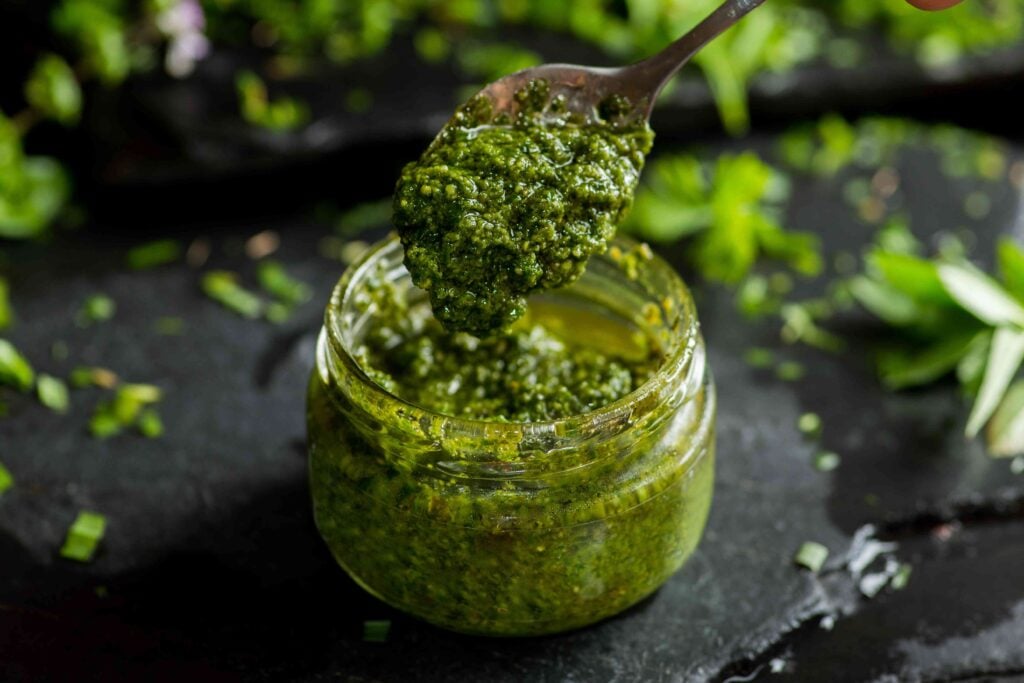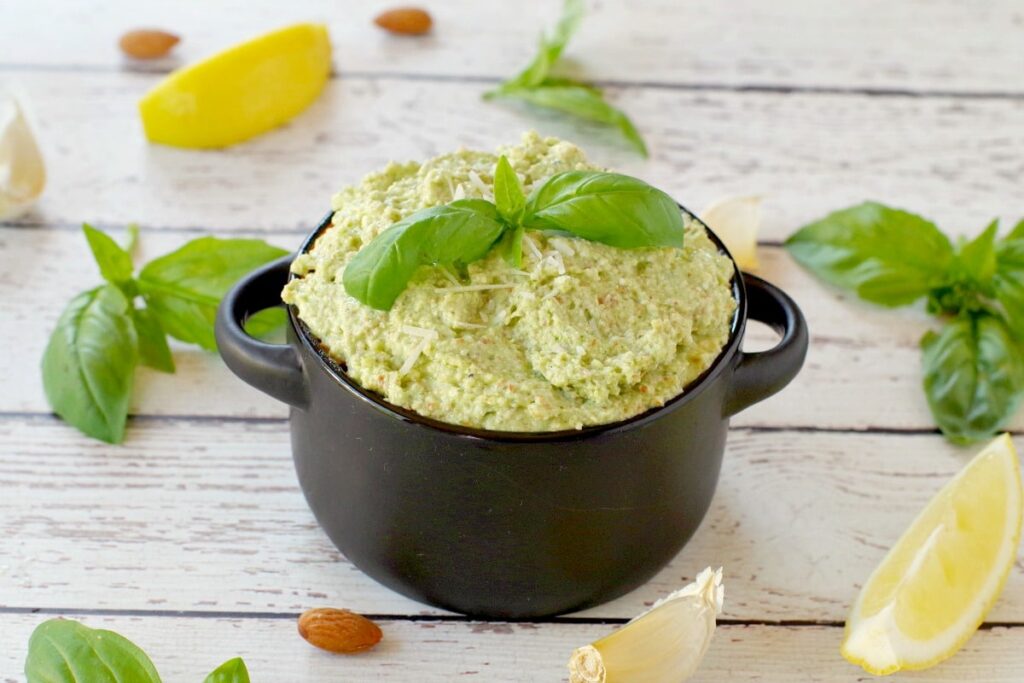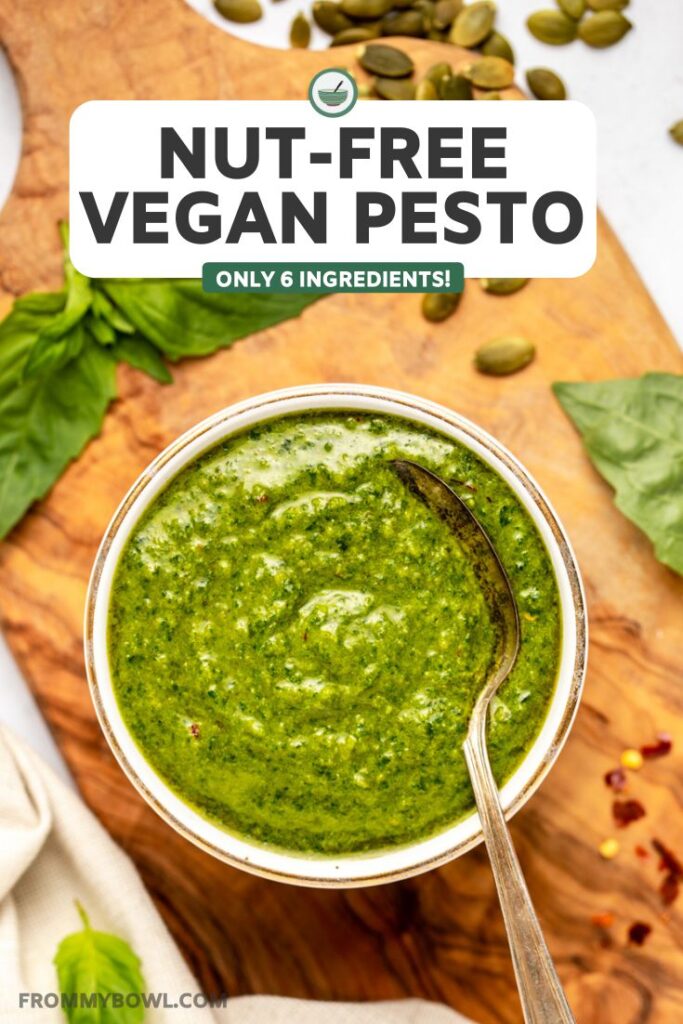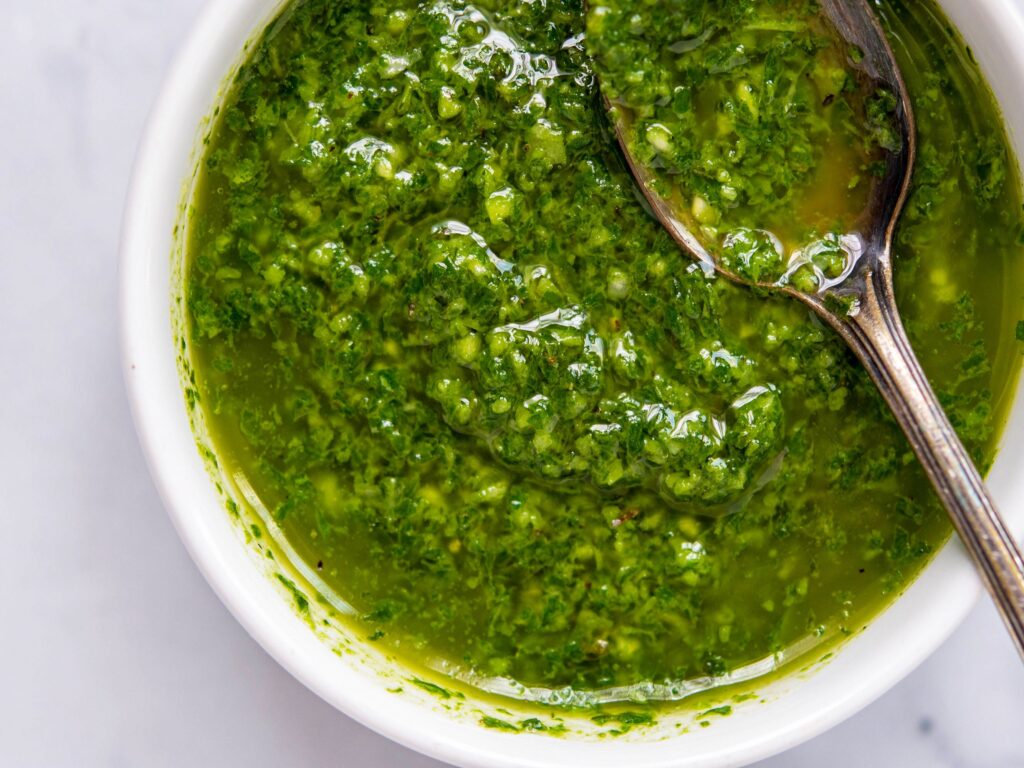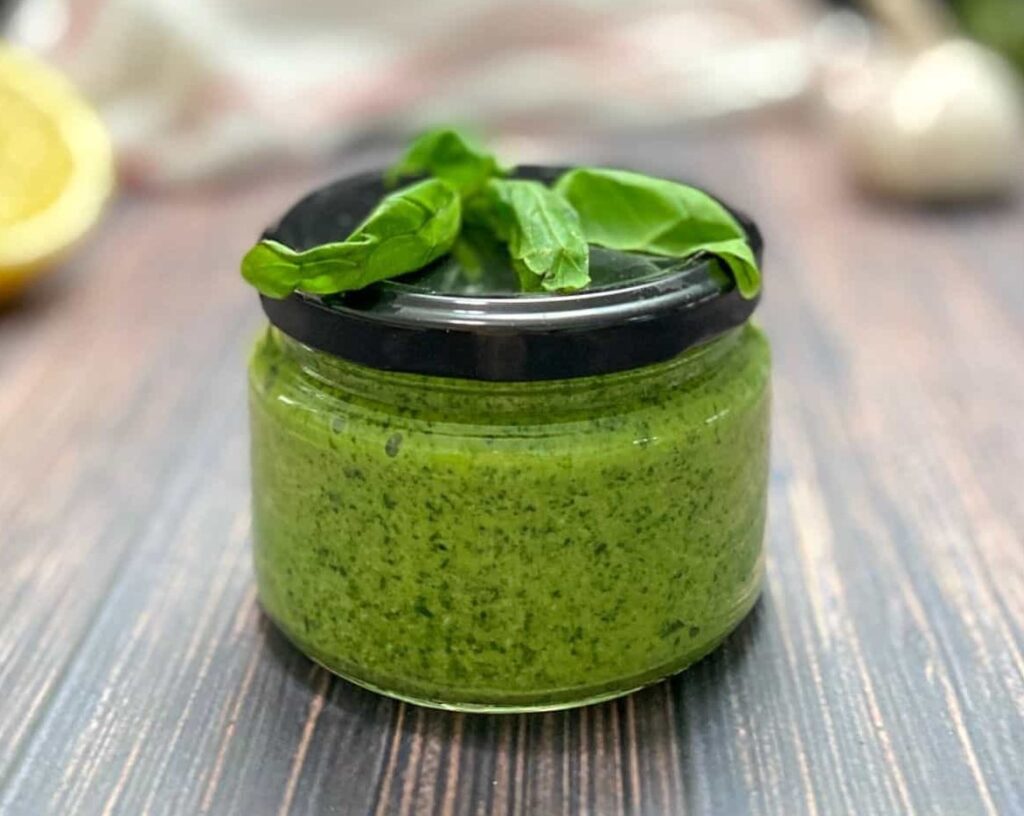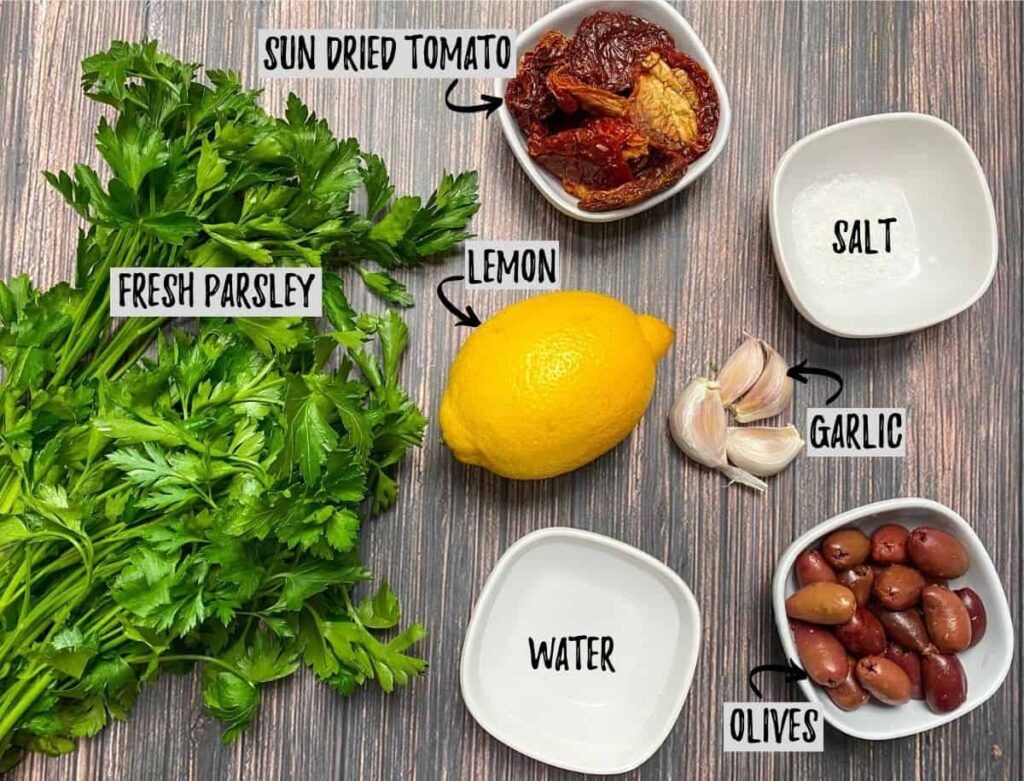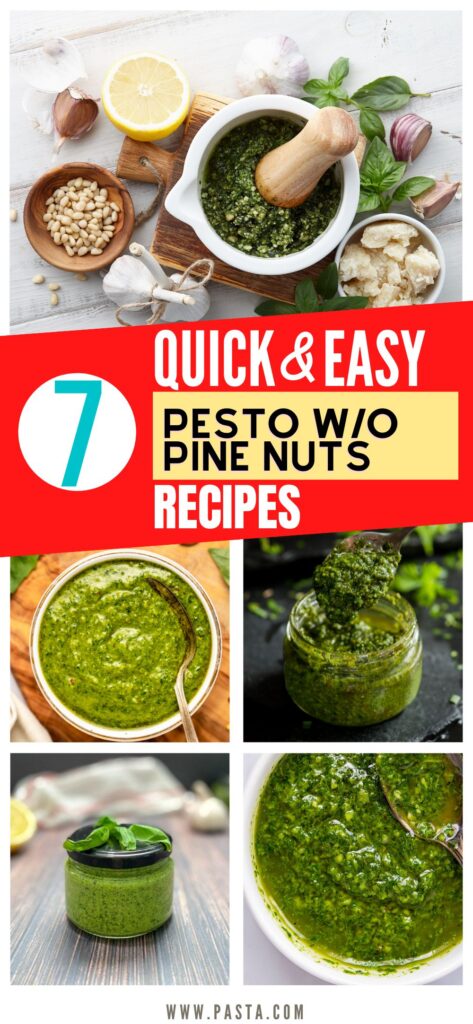What is Pesto?
Pesto is a green sauce usually consisting of pine nuts, basil leaves, garlic, olive oil, and parmesan cheese. There are several ways to make a pesto sauce, so if you can’t find fresh pine nuts, we’ve got you covered. This versatile sauce originated in Genoa (Northern Italy), where they used a mortar and pestle to crush all the ingredients together. These days, you can use a food processor or blender to make the process easier. This list includes our top picks of homemade pesto recipes. We hope you enjoy making and eating pesto and homemade pasta with your family and friends.
Recipes With Nuts (See below for recipes without nuts)
1. Basil Pesto with Walnuts
Several of you may already have extra walnuts stocked in your pantries, but the author also suggests using almonds or pecans if you don’t have walnuts on hand. It is best to use the highest-quality ingredients you can find to ensure the pesto tastes as fresh as possible. You will need a food processor for this pesto recipe. Begin by coarsely chopping the nuts and garlic cloves. Next, add fresh basil, salt, and pepper. Pulse everything until it is finely chopped and stream the extra virgin olive oil into the sauce while the processor is running. Lastly, add Parmigiano-Reggiano cheese and pulse again until you have a smooth pesto sauce.
Now that you know how simple it is to make pesto, you’ll want to ditch the store-bought sauces from now on. You can keep it in an airtight container in the fridge for up to one week. Be sure to add olive oil on top of the sauce to prevent oxidation. Thankfully, you can also freeze this pesto for later if you want. Pour any extra sauce that you have into an ice cube tray. Let it freeze fully, then store the pesto cubes in an airtight container in your freezer.
Get the full recipe and directions from Once Upon a Chef.
2. Basil Almond Pesto
This Weight Watchers-friendly recipe is simply delicious. The coloration of this pesto is a lighter green compared to most classic pesto sauces, almost resembling guacamole. You will need olive oil, raw almonds, fresh basil, lemon juice, garlic cloves, water, salt, pepper, and parmesan cheese to make this pesto. The only step is to add everything to a food processor and blend it until smooth; it’s just that easy.
The author suggests a unique way to use this sauce by incorporating it into homemade meatballs. You may also like eating pesto on eggs or baking it into a bread recipe. We love how accessible the ingredients are, and you won’t have to worry about pine nuts going stale in the pantry.
Get the full recipe and directions from Food Meanderings.
Recipes with Seeds (See below for recipes without seeds or nuts)
3. Nut-Free Vegan Pesto with Pumpkin Seeds
Enjoy this six-ingredient pesto that takes just five minutes to make from start to finish. Combine basil, salt, garlic, extra virgin olive oil, chili flakes, lemon juice, pumpkin seeds, and nutritional yeast in a food processor until smooth. The pumpkin seeds have a buttery texture that mimics pine nuts, and the nutritional yeast provides a cheese-like flavor to the mix without using any dairy products. If that doesn’t sound like a fantastic vegan-friendly sauce, we don’t know what does!
Feel free to drizzle some of this flavorful pesto on your morning avocado toast, blend it into a homemade hummus dip, or use it to create an herby vegan compound butter. The author also recommends using this pesto as a vegetable marinade. Get ready to fire up the grill to use this on your favorite grilled veggies this summer!
Get the full recipe and directions from From My Bowl.
4. Spinach Pesto with Sunflower Seeds
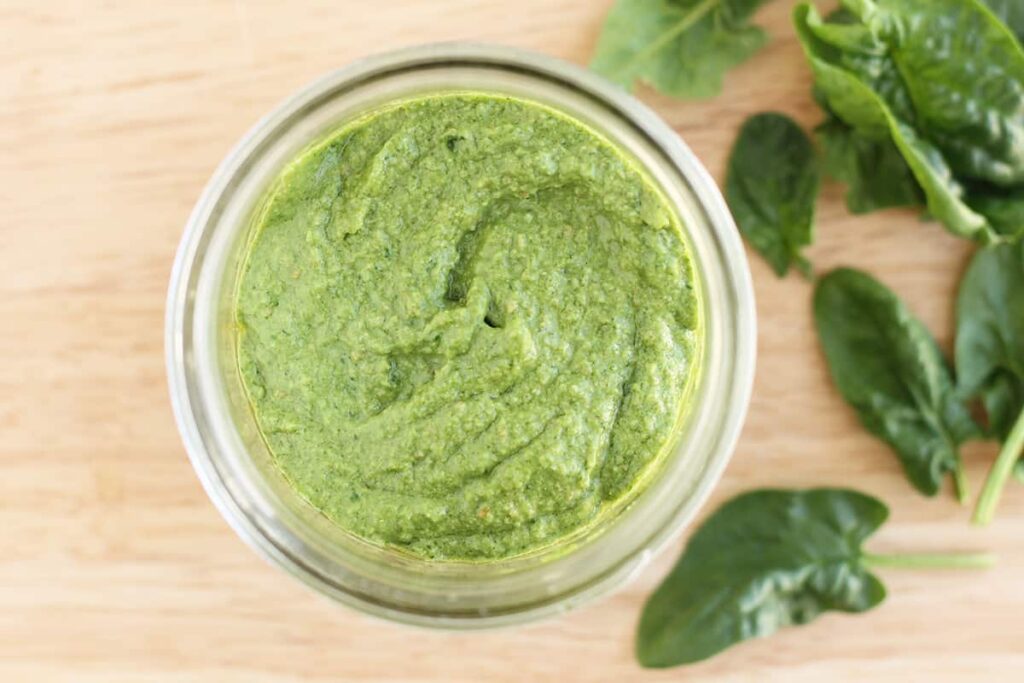
It is easy to customize this bright green pesto to your liking. The author says you can make this with kale instead or add a few fresh basil leaves into the mix. Either way, you’ll get a good helping of green vegetables without having to serve a salad on the side. Once the pesto is ready, be sure to taste it before serving. You can always add a bit of salt if necessary.
A blender or food processor will work for this recipe, and it is very freezer-friendly. You can keep any leftover pesto in an airtight freezer bag for up to three months. The author suggests getting all the air out beforehand and storing it flat in the freezer for best results.
Get the full recipe and directions from Yummy Toddler Food.
Recipes Without Seeds or Nuts
5. Vegan Pesto Without Nuts (French Pistou)
We love the simplicity of this sauce. Also known as a French pistou, it doesn’t contain any nut or seed like the previous recipes. All you need is fresh basil, extra virgin olive oil, lemon juice, garlic, salt, and black pepper. You can either use a food processor or mortar and pestle if you’re feeling up to the challenge.
Begin by rinsing the basil leaves and pat them dry. Remove any thick stems that you see; these can often leave a bitter taste in the sauce. Next, add half of the olive oil, plus lemon juice, basil, and garlic to a food processor. Process until it is well blended, and add the rest of the olive oil while the processor is running. According to the author, this pesto works well as a bread dip and pairs well with gnocchi dishes.
Get the full recipe and directions from The Spruce Eats.
6. Oil-Free Vegan Basil Pesto with Lemon
Thus far, all of the recipes have called for olive oil. If you’re looking for a low-fat alternative, try this pesto. To help even out the liquid ratio, the author substitutes the oil for lemon juice and water. Blend basil leaves, salt, lemon juice, and fresh garlic and scrape down the sides of your blender. Add one tablespoon of water and blend again. Keep adding water one tablespoon at a time until it has reached your desired consistency.
Since pesto uses fresh herbs, it is best not to cook pesto. Simply stir it into warm noodles to allow the sauce to warm through. Pesto also tastes good when added to cold pasta salads.
Get the full recipe and directions from This Healthy Kitchen.
7. Oil-Free Vegan Parsley Pesto with Sun-Dried Tomatoes
Lastly, the same author who created the previous recipe also shared a unique and flavorful pesto using fresh parsley instead of basil. Add parsley, sun-dried tomatoes, lemon juice, fresh garlic, salt, and olives in a blender or food processor and mix well. Add water one tablespoon at a time and continue blending until the sauce reaches your desired consistency. The author recommends blending at low speed to achieve a finer texture in the final product.
Granted, the coloration of this sauce isn’t the most appealing, but it is tasty nonetheless. This pesto goes great with almost anything and can be made in bulk and frozen for later.
Get the full recipe and directions from This Healthy Kitchen.
If you’ve never had pesto before, we encourage you to try making some of these recipes. This fresh, green sauce is surprisingly versatile and satisfying. You can never go wrong with pairing pasta and pesto; however, pesto also tastes excellent on panini sandwiches, salads, soups, and even pizza if you’re feeling adventurous.
If you like this post, we think you’ll really like our Pesto Genovese Recipe post.

